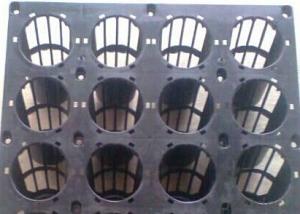Plastic greenhouses have been a staple in the agricultural industry for decades, providing a controlled environment for growing a variety of crops. However, one of the challenges faced by greenhouse owners is the need for a strong and durable support system. This is where mesh netting comes into play. In this article, we will explore the benefits of using mesh netting in plastic greenhouse applications, the different types of mesh netting available, and how to choose the right one for your needs.
The Importance of Mesh Netting in Greenhouses
Mesh netting is an essential component in the construction and maintenance of plastic greenhouses. It provides the necessary support for the structure, ensuring that it remains stable and secure. Without a proper support system, the greenhouse could be at risk of collapsing under the weight of the plastic covering or due to external factors such as wind and snow.
Types of Mesh Netting
There are several types of mesh netting available for plastic greenhouse applications, each with its own unique properties and benefits. Some of the most common types include:
– Knitted Mesh Netting: This type of netting is made by interlocking loops of plastic or metal, creating a strong and flexible structure. It is ideal for applications where flexibility and durability are required.
– Woven Mesh Netting: Woven mesh netting is created by weaving together strands of plastic or metal. It is known for its strength and resistance to tearing, making it suitable for heavy-duty applications.
– Expanded Metal Mesh: This type of netting is made from a single sheet of metal that has been stretched and formed into a diamond-shaped pattern. It is lightweight yet strong, making it a popular choice for greenhouses.
– Plastic Coated Mesh Netting: To enhance the durability and longevity of the netting, some manufacturers apply a plastic coating to the mesh. This not only protects the netting from corrosion but also adds an aesthetic appeal.
Choosing the Right Mesh Netting
When selecting the appropriate mesh netting for your plastic greenhouse, there are several factors to consider:
– Load Capacity: The netting should be able to support the weight of the plastic covering and any additional loads, such as snow or wind.
– Durability: The netting should be made from high-quality materials that can withstand the elements and last for a long time.
– Flexibility: Depending on the design of your greenhouse, you may require a more flexible netting that can conform to the structure’s shape.
– Aesthetics: While functionality is crucial, the appearance of the netting can also play a role in your decision, especially if the greenhouse is visible from the outside.
– Cost: The price of the netting should align with your budget, but remember that investing in a high-quality netting can save you money in the long run by reducing maintenance and replacement costs.
Installing Mesh Netting
Installing mesh netting in a plastic greenhouse is a straightforward process, but it requires careful planning and execution. Here are the steps to follow:
1. Assess the Greenhouse Structure: Before you begin, assess the structure of your greenhouse to determine the size and type of netting required.
2. Measure the Area: Accurately measure the area where the netting will be installed to ensure you purchase the correct amount.
3. Select the Right Fasteners: Choose the appropriate fasteners for securing the netting to the greenhouse frame. These can include clips, hooks, or ties.
4. Attach the Netting: Starting at one corner, attach the netting to the frame using the selected fasteners. Ensure that the netting is taut and secure to prevent sagging.
5. Check for Stability: Once the netting is installed, check the entire structure for stability. Make any necessary adjustments to ensure the netting is providing adequate support.
Maintenance and Care of Mesh Netting
Proper maintenance and care are essential to prolong the life of your mesh netting. Here are some tips to keep your netting in top condition:
– Regular Inspections: Inspect the netting regularly for signs of wear, tear, or corrosion. Address any issues promptly to prevent further damage.
– Cleaning: Keep the netting clean by removing debris, dust, and dirt that can accumulate over time. This will not only improve the appearance of the netting but also prevent damage caused by buildup.
– Protection from the Elements: If possible, protect the netting from direct exposure to sunlight, which can cause the plastic to degrade over time.
– Repair and Replacement: If the netting becomes damaged beyond repair, replace it immediately to maintain the integrity of your greenhouse structure.
Conclusion
Mesh netting is a versatile and essential component in the construction and maintenance of plastic greenhouses. By understanding the different types of mesh netting available, considering the factors for choosing the right one, and following proper installation and maintenance practices, you can ensure that your greenhouse remains stable, secure, and efficient for years to come. So, the next time you’re planning to build or upgrade your greenhouse, don’t forget to give mesh netting the attention it deserves.

